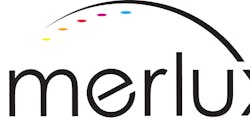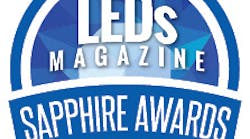This article was published in the July/August 2011 issue of LEDs Magazine.
View the Table of Contents and download the PDF file of the complete July/August 2011 issue.
+++++
The lightbox, widely used for advertising displays and in decorative lighting, is simple, relatively cost-effective and easy to design and manufacture. Traditionally, the focus of poster-box manufacturers’ engineering efforts has been on producing metal frames in various shapes and sizes. The light source was an apparently trivial issue: conventional poster boxes use T5 or T8 fluorescent tubes, which have the advantage of being both inexpensive and technically simple. The main challenge is to produce an evenly-illuminated surface: this is a matter of adjusting the depth of the metal frame to allow sufficient room for light diffusion.
So is there scope for innovation and new technology to add value to the humble poster box? An LED-based reference design developed by Philips Lumileds provides a model for imaginative poster-box manufacturers to follow. This article outlines the key technical issues that manufacturers will need to address in implementing an LED-based poster box. A range of tools are available to guide the optical, electrical and thermal design decisions that manufacturers must make.
Why use LEDs?
By implementing an LED-based design, the poster-box manufacturer can offer customers important environmental, performance and financial benefits. A comparison of fluorescent tubes with advanced power LEDs, such as the Luxeon Rebel range of devices from Philips Lumileds, will show that an LED array uses less power (meaning a reduced carbon footprint) and has a longer operating life than fluorescent tubes producing equivalent luminance.
And while end-of-life disposal of fluorescent tubes is problematic, because they contain hazardous materials, the materials in LED systems are much more environmentally benign (although subject to the provisions of various waste directives).
Every manufacturer will of course make their own economic calculation to determine the value of switching to LED technology. However, the combination of more reliable operation, lower maintenance costs and lower energy costs certainly has the potential to outweigh the higher initial bill-of-materials (BoM) cost of an LED system.
Changing the light source
In approaching the design of an LED-based poster box for the first time, the most important step is to understand the important differences between an LED and a fluorescent tube.
First, LEDs emit light from a point, and towards the front, whereas a fluorescent tube emits light along the whole length of the tube and from the full 360° circumference. So while a fluorescent tube wastes some of the light it produces, because it cannot all be reflected to the front of the box, an LED’s light can be efficiently collected and directed where it is needed. In other words, LEDs need to generate fewer lumens to produce the same luminance (in cd/m2) as a T5/T8 tube.
On the other hand, since LEDs are point sources of light, a larger part of the design effort must go towards diffusing the light evenly across the surface than is the case with fluorescent tubes.
There are also mechanical differences between LEDs and tubes: an LED is an electronic component and must be mounted on a printed circuit board (PCB) together with other components such as a driver chip. A fluorescent tube simply needs to be mounted on electrical terminals.
The third issue to consider is that both types of light source generate waste heat: the tube heats the air inside the box, while an LED generates a hot spot at its rear. This heat must be dissipated to avoid damage to the LED, and to optimize performance and operating life. In a poster-box design, the box itself can function as a heatsink and the LEDs can be placed directly on the metal casing.
Philips Lumileds reference design
Creating an LED-based poster box design, then, requires careful handling of trade-offs. The key decision concerns the number of LEDs to use. In general, an LED is more efficient and lasts longer when it is driven at a low current, though it will emit less light than an LED driven at a higher current. In addition, a system with a lower number of dimmer point sources can achieve even diffusion of light in a thinner box than a system with the same luminance provided by fewer, brighter points.
The basic mechanical design of Philips Lumileds’ demonstration model is a simple metal-frame box with an outline dimension of 230 × 230 × 37 mm. The inner dimensions are 210 × 210 × 30 mm. The PCB carries nine Luxeon Rebel LEDs (part number LXML-PWN1-0100) evenly spaced in a square configuration (see Fig. 1). This design, however, is completely scalable: the width and length of the poster box can be changed at will. An applications engineer from Future Lighting Solutions can work with the poster-box manufacturer to calculate the number and spacing of LEDs and their drive current for any given box dimensions.
The power circuit drives the LEDs at 350 mA to produce a 700-lm output, and efficacy of 71.3 lm/W. Of course, different driver and LED configurations will produce different efficacy values.
An LED has a much lower profile than a fluorescent tube, so it is possible to make the poster box thinner – there is just a 30-mm gap between the LEDs and the diffuser sheet. Normally it would not be possible to illuminate the diffuser sheet evenly at such a short distance from the light source. The reference design solves this problem by use of a secondary optic (Fraen lens F360L-3-RE-OS) in conjunction with a highly-reflective material (MCPET) in the sides and back of the poster box, together with a diffuser sheet on top (Fig. 2).
The lens emits most light at around a 70-degree angle, so instead of being directed at the diffuser sheet the light bounces inside the box before being reflected back out by the MCPET material. This design has the dual advantages of mixing the light – which makes the poster box tolerant of color-temperature variations between LEDs from different bins – and diffusing it evenly across the entire surface of the box.
The system achieves a high standard of efficiency because LEDs are inherently frugal consumers of power, and because the optical design wastes little of the LEDs’ light output.
Comparing solutions
Making a definitive comparison between this LED design and a fluorescent tube-based poster box is difficult, however, as various aspects of the design can have an impact on total power consumption. Nevertheless, poster-box designers should take account of the following factors in relation to the efficiency of LED systems:
- Systems using fluorescent tubes commonly over-specify the tubes to compensate for the decline in light output from a tube over time. Such over-specification is not required in the case of LEDs, which offer superior lumen maintenance and longer replacement cycles, giving a more stable light output over time.
- The efficiency of tubes at lower temperatures drops significantly, and tubes are also prone to flickering in the cold. LED performance, on the other hand, is not affected by the cold, and this is an advantage in outdoor applications.
- LEDs can be dimmed and controlled. With LEDs, it is possible to adjust the brightness of a poster box in response to changes in the ambient light level, and thus to generate further energy savings.
- Brightness control also enhances contrast while reducing discomfort from glare. This helps reduce light pollution, which is a growing concern in city centers.
Tools facilitate system design
Sophisticated tools are now available that enable manufacturers to develop virtual prototypes and experiment with various parameters in order to produce an optimized design.
At a high level, the SSL Designer tool from Future Lighting Solutions (http://bit.ly/jsPgtc) takes the designer’s goals for the poster box – light output and efficacy – and generates a basic specification, in terms of number and type of LEDs and drive current, to best meet the goals. It also provides a financial analysis and break-even calculation, showing whether it makes financial sense to switch from a traditional system to an LED system.
Having established a basic system specification, the Usable Light Tool (also from Future Lighting Solutions) provides a precise calculation of expected lumen output under real operating conditions (such as ambient temperature, thermal resistance and drive current). This allows the simulation of variations in thermal management, board material, power supply and so on in order to find the best combination.
Finally, technical support staff at Future Lighting Solutions can help poster-box manufacturers to model specific design variations and box dimensions based on the reference design, to estimate the effect of using different numbers of LEDs, different drive currents and different LED spacings.







